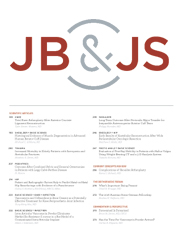PC > Qualis A1
Minimally Invasive Osteosynthesis...
Authors: Matsunaga, Fabio Teruo; Tamaoki, Marcel Jun Sugawara; Matsumoto, Marcelo Hide; Netto, Nicola Archetti; Faloppa, Flavio; Belloti, Joao Carlos
FI 4.716

JOURNAL OF BONE AND JOINT SURGERY-AMERICAN VOLUME, v. 99, p. 583-592, 2017.
DOI: http://dx.doi.org/10.2106/jbjs.16.00628
aluno Doutorado
Summary
Background: Nonoperative treatment has historically been considered the standard for fractures of the shaft of the humerus. Minimally invasive bridge-plate osteosynthesis for isolated humeral shaft fractures has been proven to be a safe technique, with good and reproducible results. This study was designed to compare clinical and radiographic outcomes between patients who had been treated with bridge plate osteosynthesis and those who had been managed nonoperatively with a functional brace.
Methods: A prospective randomized trial was designed and included 110 patients allocated to 1 of 2 groups: surgery with a bridge plate or nonoperative treatment with a functional brace. The primary outcome was the Disabilities of the Arm, Shoulder and Hand (DASH) score at 6 months. The score on the Short Form-36 (SF-36) life-quality questionnaire, complications of treatment, Constant-Murley score for the shoulder, pain level, and radiographic results were assessed as secondary outcomes. Participants were assessed at 2 weeks; 1, 2, and 6 months; and 1 year after the interventions.
Results: The mean DASH score of the bridge plate group was statistically superior to that of the functional brace group (mean scores, 10.9 and 16.9, respectively; p = 0.046) only at 6 months. The bridge plate group also had a significantly more favorable nonunion rate (0% versus 15%) and less mean residual angular displacement seen on the anteroposterior radiograph (2.0° versus 10.5°) (both p < 0.05). No difference between the groups was detected with regard to the SF-36 score, pain level, Constant-Murley score, or angular displacement seen on the lateral radiograph.
Conclusions: This trial demonstrates that, compared with functional bracing, surgical treatment with a bridge plate has a statistically significant advantage, of uncertain clinical benefit, with respect to self-reported outcome (DASH score) at 6 months, nonunion rate, and residual deformity in the coronal plane as seen on radiographs.
Level of Evidence: Therapeutic Level I. See Instructions for Authors for a complete description of levels of evidence.


